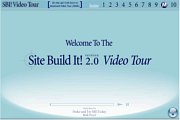|
Translation ToolsLanguage diversity is a fact of life. It creates language barriers. And we rely either on translation tools or on human translators to break through these barriers. What if there were no language barriers anymore? Imagine a world with instant translation available cheaply and on-the-scene: You can explore the Arab web and blogosphere. When traveling to Italy, you can easily communicate with locals. You can watch Chinese TV, subtitled in your language. You can chat with your friends from Mexico, conduct negotiations with business partners from Japan, cook that wonderful recipe from your Polish grandma's cookbook, write love letters to your Russian fiancée, and so on and so forth.Actually there is a huge latent demand for translation. Human translators cannot and will never be able to meet this demand. It is the language translation technology that will one day help people overcome language barriers. It already helps greatly in translation of speech and text, videos, web-sites and streaming content. It makes work of human translators more efficient and enables translation clients to get translations cheaper and faster. What are translation tools? It is a tough question to answer. There are a great many of them, used for different purposes and by different players on the translation market. The major translation tools currently exploited in the translation industry are translation memories, terminology databases, and machine translation engines. They are used to translate all sorts of content, handle multilingual web sites, and localize software. Translation Memories: Translation memories (TMs) are databases of texts already translated by professional translators. These tools store previously translated content and retrieve from it information for reuse when queried by the translator, so the translator will never have to translate the same (or similar) sentence twice. Translation memory is a twenty year old technology, but it is still developing. Most of the translation memories currently available on the market were developed in the early 1990s. Translation memory tools are used by freelance translators, in-house translators and translation departments, translation agencies and localization companies to increase productivity and consistency of the translation output. These tools drive down costs and improve quality of translations. Leading providers of commercial translation memory software include SDLX/Trados, Déjà Vu, STAR Transit, and Wordfast (also provides a free web-based TM tool called Wordfast Anyware). Terminology Databases: Important tools for translators to keep consistency of technical, scientific and medical translations. They allow the translator to input source and target terms, synonyms, definitions and other information, such as field and images. Terminology databases are a kind of dictionaries and tell the translator which term to use. Machine Translation Engines: There are offline and online machine translation systems. The latter are very popular among the general public and are frequently used for instant and free translation of content. However, the quality of such online translation is often poor. Some people manage to use machine translation engines as dictionaries and get bad results as well. For the general public, free machine translation is much more useful when it is used for gisting, that is, for getting a gist out of the message. Professional translators use machine translation as well to speed up the translation process. However, they post-edit the output produced by machines, thus getting high quality translations. Didn't find what you were looking for? Use this search feature to find it. |
Not happy with the rates you pay for professional translation? Look for cheaper ways to translate your websites, blogs and articles? Try this translation software. Even though high-quality, professional translation is rather expensive and takes time to do. If you have neither enough time nor money to spend on professional translators, but are still interested in translation of your website or blog and quality is not of utmost importance to you, check if this software can help you. Almost everyone would like to quit their day job, or work from home, or needs extra money. What if you could build for yourself an online business that could give a full-time income... With Site Build It! this dream can become a reality. I do not offer you another get-rich-quick scheme. I am talking about a complete and proven step-by-step process that will require your time and work. But it is a doable process that has given many people a new income and a shot at a new life. Here's some people who are doing it. Site Build It! is more than just hosting or site-building. It provides all the tools you need for getting traffic, sending out e-mails, adding a blog, and monetizing your site. And you don't have to be a techie to use it. Want to learn more? Take the Video Tour. It will show you what I mean. Invest the most Click, sit back, and The process works! I know because I've done it myself. You are reading now my site built with the help of Site Build It! tools. Two years ago I have jumped at the opportunity to turn my dreams to reality and have never regretted that decision. What stops you? You can give yourself this opportunity too! Site Build It! offers a No-Risk Money-Back Success Guarantee that means you have nothing to lose. |









